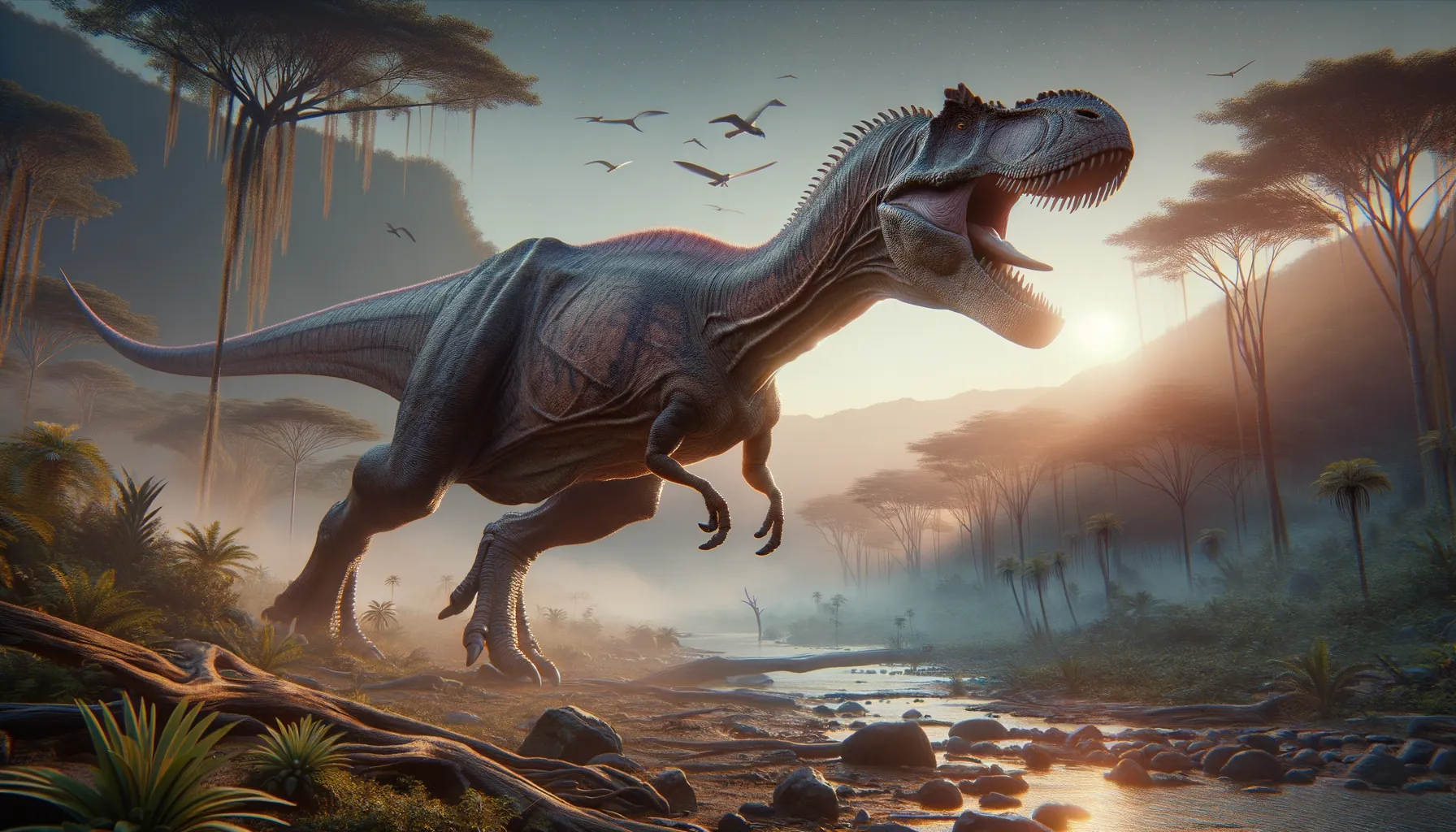
Overosaurus
Ancient giant with a booming legacy.
Period
Cretaceous
Length
About 10 meters from head to tail.
Height
Approximately 4 meters tall at the shoulders.
Weight
Around 4 to 6 tons.
Overosaurus was a giant, long-necked dinosaur known as a sauropod. This herbivorous dinosaur roamed the Earth during the Late Cretaceous period. Its skeleton reveals that it possessed robust limbs to support its enormous weight. Discoveries of Overosaurus fossils help scientists understand more about the diversity of sauropods in South America.
Diet
Overosaurus was a herbivore, primarily feeding on plant material. It likely grazed on leaves, ferns, and branches from tall trees, making use of its long neck to reach high foliage.
Hunting
As a plant-eater, Overosaurus did not engage in hunting. Instead, it roamed vast areas searching for abundant plant life to sustain its massive body.
Environmental challenges
Overosaurus faced challenges like fluctuating climates and the need for vast territories with adequate food supplies. Predators were a constant risk, especially to the young and vulnerable. Natural events such as droughts or floods would have affected their habitat availability and food resources.
Speed
Moderately slow due to its massive size.
Lifespan
Estimated to live several decades.
First discovery
First discovered in Argentina in 2002.
Fun Facts
- Overosaurus was a dinosaur that lived during the Late Cretaceous period, around 85 million years ago.
- It was discovered in Argentina, which is known for its rich fossil sites.
- Overosaurus was a sauropod, a group of long-necked dinosaurs known for their massive sizes.
- Unlike some of its gigantic relatives, Overosaurus was relatively small, about the size of a school bus.
- Its name, Overosaurus, comes from the Spanish word 'overo,' referring to a type of patterned cattle, due to its unusual bone texture.
- Paleontologists believe Overosaurus was a herbivore, feeding on the lush plant life of its time.
- The discovery of Overosaurus has helped scientists better understand the diversity of sauropods in South America.
Growth and Development
Starting life from eggs, Overosaurus experienced rapid growth rates in its early years. This quick development helped them reduce vulnerability to predators. As they matured, their growth slowed, but they continued to gain weight and size throughout their lives.
Habitat
Overosaurus lived in lush environments where vegetation was plentiful, such as forests and floodplains. It required large areas to roam and a stable supply of high foliage for sustenance. This dinosaur likely migrated in response to seasonal changes in its habitat.
Interaction with other species
Overosaurus likely shared its environment with other dinosaurs, including both herbivorous and carnivorous species. Its sheer size offered some protection against predators. Interactions with other herbivores might have involved competition for resources or communal grazing.
Natural lifespan
They could naturally live for several decades.
Reproduction
Overosaurus reproduced by laying eggs, probably in nests built in secluded areas. Parent dinosaurs might have provided some form of protection to ensure the young could survive. The young were notably smaller, requiring significant growth to reach full size.
Social behaviour
These dinosaurs might have exhibited herd behavior, traveling in groups for protection. Such social structures would help deter predators and locate food sources more efficiently. Communication among herd members could have been vital in maintaining group cohesion during migrations.
Fossil locations
The first fossils were discovered in Neuquén Province, Argentina. These discoveries provided important insights into South America's Late Cretaceous dinosaurs. Due to limited fossil finds, their distribution range remains somewhat unclear.
